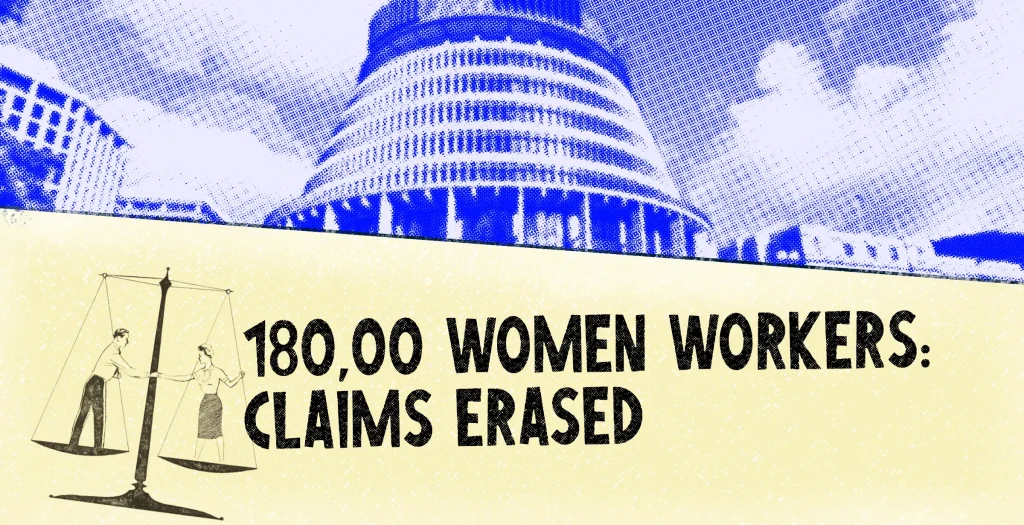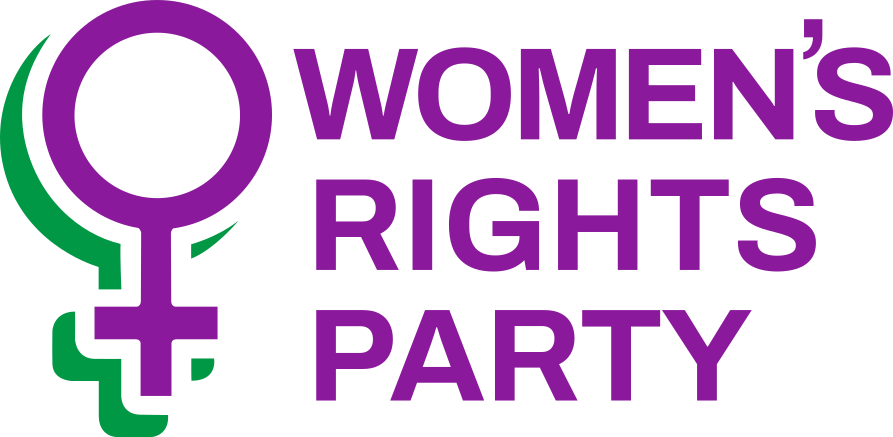Women were shocked to hear the news that the Government had introduced far-reaching changes to the Equal Pay Act under urgency using their Parliamentary majority to pass the Bill the following day. Even Coalition Government MPs were not told of Cabinet’s decision until the last minute.

Dame Marilyn Waring, with nine other women, all former MPs, set up a People’s Select Committee to consider evidence around the changes because organisations and individuals were denied the opportunity to have a say through the usual Select Committee process.
Submissions to the People’s Select Committee on Pay Equity close today
In its submission to the People’s Select Committee, the Women’s Rights Party said: “The unbridled power of the Cabinet has impacted on an estimated 180,000 women workers whose pay equity claims have been extinguished and are now in limbo. Many of these claims will not be able to restart under the new pay equity regime.”
The Women’s Rights Party said the government was in breach of New Zealand’s commitments to the Convention on the Elimination of All Forms of Discrimination Against Women (CEDAW) by denying women the right: “To participate in the formulation of government policy and the implementation.”1
Countries that have signed up to CEDAW are also required to take “appropriate measures, including legislation, to ensure the full development and advancement of women, for the purpose of guaranteeing them the exercise and enjoyment of human rights and fundamental freedoms on the basis of equality with men.”
In addition, CEDAW reinforces “the right to equal remuneration, including benefits, and to equal treatment in respect of work of equal value as well as equality of treatment in the evaluation of the quality of work”.2
Any changes to the law which reduced or removed the protections in relation to pay equity would be in breach of CEDAW, the Women’s Rights Party said in its submission.
The main determinant of the pay gap between men and women is “occupational segregation” which relates to the undervaluing of work typically performed by women and influenced by sex-based stereotypes that regard work associated with caring, for example, as “women’s work”.
The Women’s Rights Party said the destruction of avenues for pay equity claims for women workers will have a life-long effect on women well into their retirement.
A major source of the disadvantage women face in retirement is inequity in retirement savings because women earn less than men on average over their working life (this is called the “pay gap penalty”).
NZ Super provides crucial support to those aged over 65, but is especially important for women, who are more likely to work part-time and to have periods of time out of paid work. This,and the unequal division of unpaid work, particularly care work, is called the ‘mothering penalty’.3
Women continue to predominate in the caring professions such as nursing and teaching, that are undervalued by society and consequently underpaid. Men in those same occupational groups often rise to leadership and managerial roles that attract higher pay in greater numbers and more rapidly than women.
Women also predominate in precarious and low-paid work such as aged care and disability support where they face a daily struggle in the face of cost of living increases in the basics of life – rent, food, petrol.
The cancellation of the existing pay equity claims, and the tightening up of requirements to raise new claims, means that work typically done by women will continue to be undervalued.
“This will contribute to the on-going sex-based pay gap, and to the increasing level of ‘in-work poverty’ with its impact on family incomes and child poverty. It will exacerbate future income inequality for women in retirement as a result of a lifetime of lower wages than their male counterparts,” the Women’s Rights Party said.
- CEDAW Article 7(b). https://www.ohchr.org/sites/default/files/cedaw.pdf, p.3 ↩︎
- CEDAW Article 11(1)(d), https://www.ohchr.org/sites/default/files/cedaw.pdf. p.4 ↩︎
- Morrisey, S. “What does retirement look like for women?” 30 June 2022. Report prepared for the Retirement Income Policy Review 2022. https://assets.retirement.govt.nz/public/Uploads/Retirement-Income-Policy-Review/2022-RRIP/TAAO-_What-does-retirement-look-like-for-women_2022.pdf ↩︎
